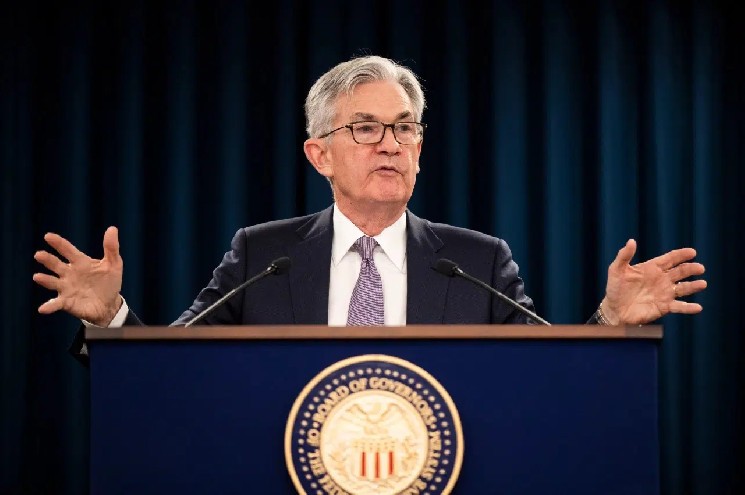Federal Reserve Cuts Interest Rates for the Third Time: What It Means for the Economy and Investors
Fed Delivers Expected Quarter-Point Cut as Balance Sheet Strategy Shifts
In a widely anticipated move that signals continued confidence in the economy’s resilience while acknowledging lingering concerns about inflation, the Federal Reserve lowered its benchmark interest rate by 25 basis points on Wednesday. The decision brings the upper band of the federal funds rate from 4.25% to 4.00%, marking the third consecutive rate reduction in the current easing cycle. While the cut itself came as little surprise to market watchers, the accompanying announcement regarding the central bank’s balance sheet policy represents a significant shift in monetary strategy that could have far-reaching implications for financial markets.
Following months of careful messaging and gradual policy adjustment, the Federal Open Market Committee (FOMC) revealed that its balance sheet reduction program—commonly known as quantitative tightening—will conclude on December 1st. This announcement, which arrived earlier than many analysts had projected, indicates that policymakers are increasingly confident that inflation is on a sustainable path toward the Fed’s 2% target while being mindful of potential economic vulnerabilities. “The Committee has gained increased confidence that inflation is moving sustainably toward 2 percent, and is attentive to the risks to both sides of its dual mandate,” noted the official statement, which maintained much of the language from previous communications while subtly shifting emphasis toward economic growth concerns rather than inflation fears.
Economic Data Continues to Paint a Mixed Picture for Policymakers
The Fed’s decision comes against a backdrop of mixed economic signals that have complicated the central bank’s path forward. Recent labor market data has shown some cooling, with the unemployment rate ticking up slightly to 3.9% and monthly job creation moderating compared to the blistering pace seen in 2021-2022. However, consumer spending has remained relatively robust, supported by strong household balance sheets and gradually declining inflation. The personal consumption expenditures (PCE) price index—the Fed’s preferred inflation gauge—has moderated to 2.4% year-over-year, suggesting that the most severe price pressures have eased. Meanwhile, GDP growth for the third quarter exceeded expectations at 2.8%, indicating that the economy maintains considerable momentum despite the restrictive monetary policy that has been in place for over two years.
This complex economic landscape has created a delicate balancing act for Fed officials. Chair Jerome Powell emphasized this challenge during his post-meeting press conference, noting that “policy remains somewhat restrictive, and we’re in a position to adjust policy as appropriate depending on how the data and the outlook evolve.” Powell reiterated that future decisions would be made on a meeting-by-meeting basis, dependent on incoming economic data rather than a preset course. This approach reflects the uncertainty facing policymakers as they navigate the final stages of bringing inflation back to target without unnecessarily constraining economic growth or labor market health. Several FOMC members have publicly expressed different views on how quickly rates should be reduced, with some advocating for a more patient approach while others worry about overtightening in the face of moderating inflation.
Balance Sheet Strategy Marks New Phase in Monetary Policy Normalization
Perhaps the most consequential aspect of Wednesday’s announcement was the decision to end the balance sheet reduction program that has been running in the background while interest rate decisions have captured headlines. Since the pandemic, the Fed’s balance sheet expanded dramatically as it purchased Treasury securities and mortgage-backed securities to stabilize markets and support economic recovery. The subsequent reduction process—allowing bonds to mature without reinvesting the proceeds—has been gradually shrinking the central bank’s holdings, but at a measured pace designed to minimize market disruption.
The announcement that this process will conclude on December 1st represents a significant milestone in the normalization of monetary policy following the extraordinary measures implemented during the pandemic era. According to estimates from the Federal Reserve Bank of New York, the Fed’s balance sheet has contracted by approximately $1.4 trillion since its peak in 2022, but remains substantially larger than pre-pandemic levels at roughly $7.3 trillion. Market strategists note that ending quantitative tightening could provide additional support to the economy by halting the gradual withdrawal of liquidity from financial markets. “The conclusion of balance sheet reduction effectively provides stimulus to markets independent of the rate cuts themselves,” explained Morgan Stanley chief economist Elizabeth Johnson. “It’s essentially removing a headwind that had been running in the background of monetary policy.”
Market Reactions and Implications for Investors
Financial markets responded positively but cautiously to the Fed’s announcement. Major stock indices initially climbed following the decision, with the S&P 500 and Nasdaq Composite both reaching intraday highs before moderating as investors digested Powell’s comments during the press conference. The yield on the benchmark 10-year Treasury note initially declined but then stabilized as markets assessed the implications of both the rate cut and balance sheet decision. The dollar weakened modestly against a basket of major currencies, potentially providing some relief for U.S. exporters and multinational corporations that have faced headwinds from dollar strength in recent years.
For investors, the latest Fed move confirms the transition from a tightening cycle to an easing cycle, though questions remain about the pace and ultimate destination of rate cuts. Fixed-income strategists suggest that the rate environment continues to present opportunities in bonds, particularly at the intermediate part of the yield curve. “We’re seeing attractive entry points for fixed income investors who have been waiting for clarity on the Fed’s path,” noted BlackRock’s head of U.S. fixed income, Sarah Matthews. “The end of quantitative tightening could also support mortgage-backed securities and certain segments of the corporate bond market that had been facing pressure from reduced liquidity.” Meanwhile, equity market participants are assessing which sectors might benefit most from lower borrowing costs, with traditional rate-sensitive areas like real estate, utilities, and consumer discretionary stocks attracting increased attention.
Looking Ahead: Challenges and Opportunities in the Evolving Monetary Landscape
As the Fed navigates this transition phase, several key challenges and uncertainties remain on the horizon. The upcoming presidential election adds a layer of political uncertainty that could impact economic policy more broadly. Global factors, including geopolitical tensions, energy market volatility, and economic conditions in Europe and China, continue to present potential risks to U.S. economic stability. Additionally, structural issues in the labor market—including demographic shifts, changing work preferences, and technological disruption—may complicate the relationship between employment, wages, and inflation that has traditionally guided monetary policy.
For households and businesses, the Fed’s gradual easing cycle presents both opportunities and considerations. Consumers with variable-rate debt, including credit cards and adjustable-rate mortgages, should begin to see modest relief in borrowing costs, though the transmission mechanism from Fed policy to consumer rates often works with a lag. Prospective homebuyers watching mortgage rates closely may find some encouragement, though housing market dynamics remain complex due to limited inventory and affordability challenges. Businesses facing capital investment decisions may benefit from improved financing conditions, potentially supporting productivity-enhancing investments that could help sustain economic growth without reigniting inflation pressures. As Chair Powell noted in his closing remarks, “Our goal remains the same—to foster a sustainably strong labor market within the context of price stability.” The coming months will reveal whether the Fed’s carefully calibrated approach succeeds in achieving this delicate balance, with significant implications for investors, consumers, and the broader economy as this monetary policy transition continues to unfold.












